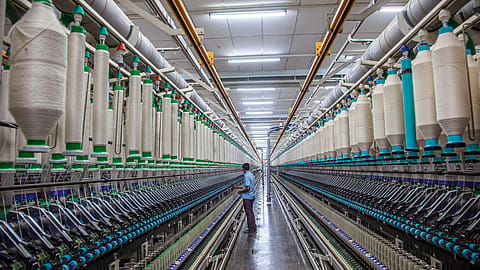Textiles, gems & jewellery, seafood MSMEs hit hard by Trump’s 50% tariff
MSMEs account for as much as 45% of India's total exports to the United States.

Indian exporters now face a 50% tariff on goods shipped to the United States as the additional 25% tariff imposed by US President Donald Trump on imports from India kicked in from 9:31 p.m. IST on August 27.
The imposition of higher tariffs by the US will significantly impact micro, small and medium enterprises (MSMEs), which account for as much as 45% of India's total exports, according to Crisil.
The textiles, gems and jewellery and seafood industries account for around 25% of India’s total exports to the US. “MSMEs have more than 70% share in these sectors and will be hit hard. Another sector likely to face the heat is chemicals, where MSMEs have a 40% share,” said Crisil.
Tirupur’s readymade garment makers, Surat’s diamond polishers set to bear the biggest brunt, warned Crisil. “The Tirupur cluster, which accounts for over 30% of India's RMG exports, will be severely impacted as 30% of its exports are to the US,” the rating agency said.
In the gems and jewellery sector, MSMEs in Surat, which dominate diamond exports with over 80% share, will feel the tariff shock, warned Crisil. “Diamonds account for over half of the country’s gems and jewellery exports, and the US is a major consumer of Indian diamonds, comprising nearly a third of exports,” it said.
Seafood MSMEs, too, will be hit hard following the imposition of a 50% tariff as they face severe competition from Ecuador, which is geographically closer to the US and has been levied a much lower tariff of 15%, cautioned Crisil.
Delhi-based think tank Global Trade Research Initiative (GTRI) has suggested introduction of targeted credit lines for shrimp, apparel, jewellery, handicrafts, carpets, and other highly impacted industries to prevent mass layoffs and closures. It also called for temporary enhancement of export incentive schemes to support liquidity, while introducing wage-support programmes for workers in key hubs like Tiruppur, Surat, Bhadohi, and Jodhpur to cushion employment losses.
Recommended Stories
GTRI also advocated market diversification and urged the government to lead sector-specific trade missions for shrimp, apparel, jewellery, and handicrafts to alternative markets.
Earlier in August, Moody's Ratings warned that 25% tariffs on Indian goods exported to the US will diminish prospects for India’s ambitions to develop its manufacturing sector, particularly in higher value-added sectors such as electronics.
The revised tariff rate assessed on Indian goods is significantly above those from other major exporters in the Asia-Pacific region, many of which have been assessed rates of between 15% and 20%. “Curtailed access to the largest economy globally diminishes prospects for India’s ambitions to develop its manufacturing sector, particularly in higher value-added sectors such as electronics,” said Christian de Guzman, Senior Vice President, Moody's Ratings.
The higher tariffs relative to other countries also disadvantages India as it vies for a greater share of trade and investment flows away from China, which has been subject to even more severe tariff treatment by the US, Moody’s said.
Moody’s forecasts India’s real GDP growth to slow by around 0.3 percentage points compared with its current forecast of 6.3% growth for the financial year 2025-26.